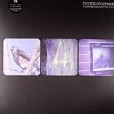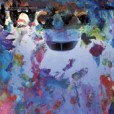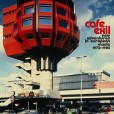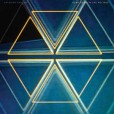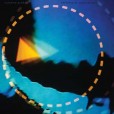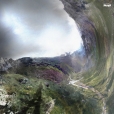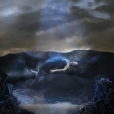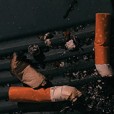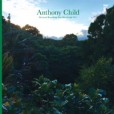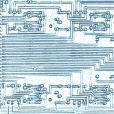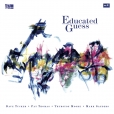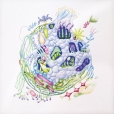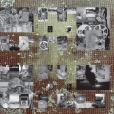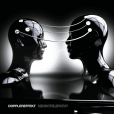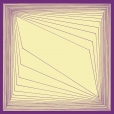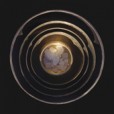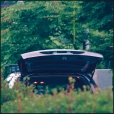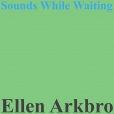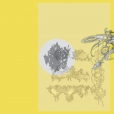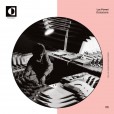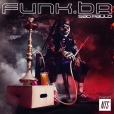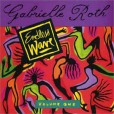Your basket is empty

The opening track of the Ecstatic Computation album, re-imagined by eight friends and long-time collaborators.
‘Kali Malone turns in a slowed-down, austere and eerie version for two Organs; Evelyn Saylor a vocal ensemble conveying its choral, psychedelic and vitalistic nature. Walter Zanetti composes Fantas for electric guitar. Bendik Giske’s reinterpretation for saxophone and voice captures its atmosphere and its psychic meteorology. Carlo Maria resynthesizes for TR808 and MC202, with an eye on the dancefloor. Jay Mitta’s Singeli pitches up the percussion, unleashing the frenetic, shifting matter within the original into euphoric dance. Baseck’s variation is a hardcore rave fantasia; whilst Kara-Lis Coverdale’s take is a phantasmagoria for piano that gently, yet inexorably, captures the relentlessness chimerical qualities of the original, unveiling its spectral backbone.’
Perhaps you remember the French music producer Coni’s record for The Trilogy Tapes.
For the inaugural release of his own label, he presents the debut of a new alias.
‘Inspired by dramatic modern landscapes, and suffused by haunting memories, the record is an attempt to seek beauty in the midst of a chaotic and saturated present. Running over with intense rhythms, flicking hi-hats, fierce voices, melancholic pads and abject distortion, Transperce whips up a kind of industrial catharsis.’
‘In another life David Edren aka DSR Lines is surely a visionary biologist or chemist. In this new sound adventure, he stages anatomical and cellular symphonies, invisible biochemical processes, painting the micro-dimensional flows of the body, or imaginary geographies of hidden micro-bodies. His signature organic-electronic sound is enriched here with the influences of non-European music, especially Chinese and Japanese music (stick and chimes percussion). The mood is intimate and twilit, poised between exotic ambience and cinematic gesture: a miniaturist description of liquid currents, labyrinthine veins, weaving streams, molecules and particles in multi-orbital dances, muscular chords, drowning bubbles, light waves; all within a confident compositional overview that is unique and fascinating.’
Astounding, deeply exploratory, previously unreleased work by the legendary Brazilian percussionist and composer.
A wild and unsettling collage, implacably original and startlingly intense — from the electroacoustic opener, which channels ancestral African inspirations into cosmogony, through the proto-mixtape Exemplo de Sintetizadores, which transitions from transcendental drones to astral cha-cha-chas, to a musical consideration of dripping water, in Suite Contagotas.
Djalma is best known for his studio work on benchmark albums, including numerous classics by Caetano Veloso, Gilberto Gil, and Jorge Ben, and for his own polyrhythmic opus Baiafro; and the finale here was first performed at the 1964 Nós, Por Exemplo concert, an event often cited as the inauguration of the Tropicalia movement. Djalma brings the electronics — medical oscillators, for example — to beef up his percussion. It’s eye-opening.
Corrêa called it ‘spontaneous music’; sonic adventures ranging audaciously across an array of genres, from jazz to deep funk to complete abstraction, all imbued with his signature DIY ethic.
Drawn from the original master-tapes, guided by Corrêa himself, just prior to his death.
Intriguing, immersive music. Dazzling, engrossing artwork, too.
You can hear their stage experience in ‘the sizzle and swing of the percussive highlights here, programmed with a serious depth and wriggle that reflect both an extension of and return to form. Considerations of the machine-human interface, neurological realities and physical probabilities dominate. But these tracks are economical and precise, glittering with emotional depth and cinematic effects. The album’s core, a three-act movement of symphonic uncertainty and revelation, marks one of the pair’s most evocative compositions in a career full of them.’
‘Further adventures in Organic Electronic Music by this rigorous magician of vaporous, oscillating patterns, sidereal frequencies, nebulous dust; explorer of inter-zonal paths, new dreamlike dimensions, undiscovered planets. Marrying the momentum of Kraut-Kosmische with a personal, gentle minimalism, DSR Lines specialises in rare atmospheres of rhythmic pulsation, with enveloping, spiralling sounds, luminous and radiant in their hypnotic aura, or magnificently ecstatic and ascending.’
‘These recordings are traces of something I have come to love to do in large resonant spaces, which is to set up sustained chords on multiple organs and then move slowly through the sound. The instruments are usually far apart, which makes for the emergence of large fields of continuous change, spaces of harmonicity that can be passed through layer by layer and which contain within them points of both clarity and overwhelming complexity. The organ pipes are tuned and retuned, though sometimes I leave them just as they are. What I’m searching for is the moment when a particular kind of sounding texturality is revealed – it is rough, focused and yet strangely transparent.’
With Eno more the guiding hand for this second collaboration with Cluster. Open, airy, ambient, unhurried. Originally released in 1978, but still fresh (except for Eno’s singing).
Zarko Komar aka Feloneezy winging in from Belgrade — by way of Hyperdub — with an EP of hypnotic psychedelia.
Four characteristically intimate, steppers blends of jungle and juke, unfurling into intervals of dub and jazz; axis as nexus, threaded with field recordings, startlingly dotted with song.
Check it out.
Previously unreleased music by the electroacoustic music pioneer, from 1973-1992.
Commercials, commissions and secrets.
Photophonie itself was made for a photographic exhibition by Alain Willaume. Il Etait Une Fois was commissioned by the GMEB; Trans-Voices by the American Center, Paris. Leica is by way of a jingle for the camera company.

